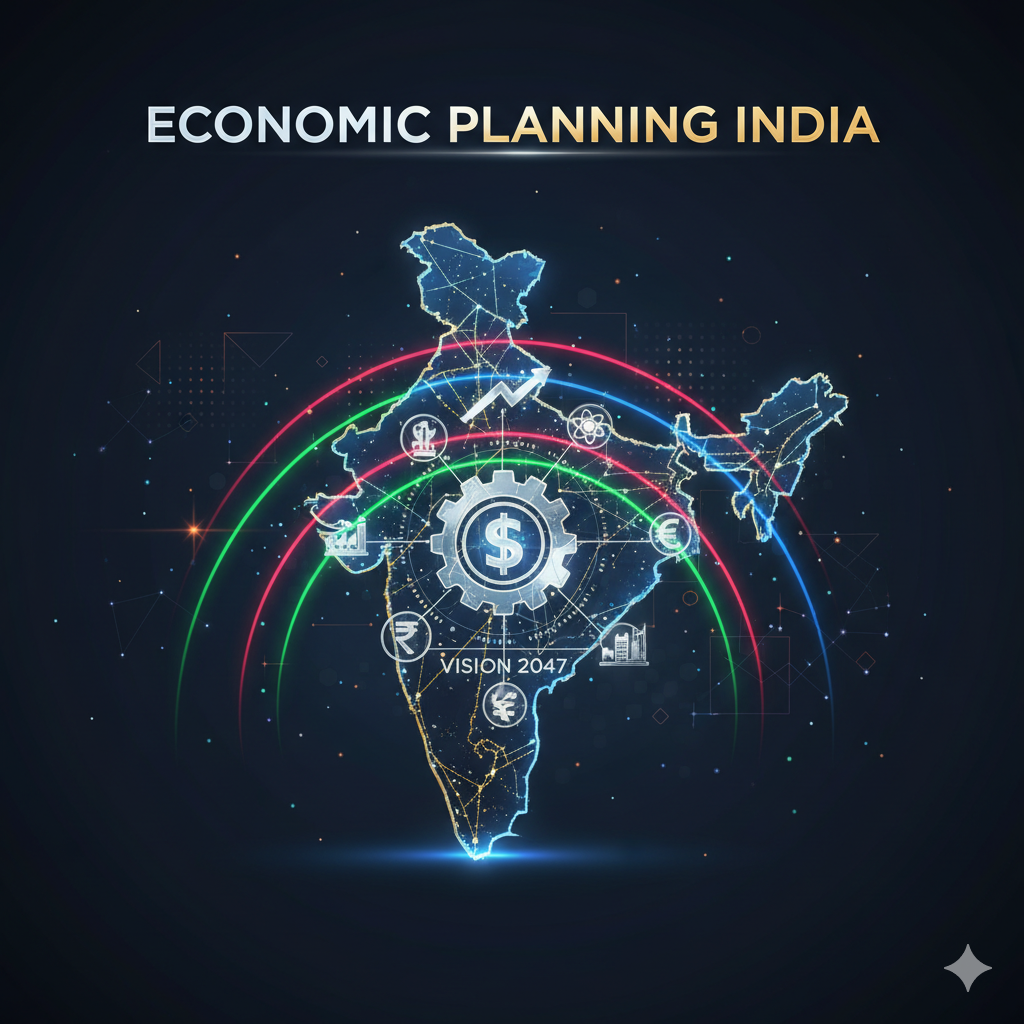Introduction
The Indian Himalayan region, renowned for its scenic beauty, rich biodiversity, and cultural heritage, has emerged as a major tourist destination. States like Jammu & Kashmir, Himachal Pradesh, and Uttarakhand attract millions of domestic and international tourists every year. Tourism provides substantial economic benefits, creating employment, fostering local entrepreneurship, and generating revenue for state governments.
However, the rapid growth of tourism has increasingly raised concerns about the ecological carrying capacity (ECC) of these fragile mountain ecosystems. The concept of ecological carrying capacity refers to the maximum number of individuals, tourists, or activities that an environment can sustain without causing long-term degradation to its natural resources, biodiversity, and ecosystem services. When tourism surpasses this threshold, it leads to environmental degradation, resource depletion, and social tensions, threatening the very foundation of sustainable tourism.
This essay critically evaluates how tourism is pushing Jammu & Kashmir, Himachal Pradesh, and Uttarakhand towards the limits of their ecological carrying capacity, examining its causes, impacts, and possible mitigation strategies.
Understanding Ecological Carrying Capacity (ECC)
ECC is determined by multiple interrelated factors:
- Biophysical Capacity – The ability of natural resources such as forests, water, and soil to sustain human activities.
- Social Capacity – The community’s tolerance to changes brought by tourism, including crowding, lifestyle changes, and cultural impacts.
- Economic Capacity – The capacity to support tourism infrastructure without harming local livelihoods or ecosystems.
- Psychological Capacity – Visitors’ perception of overcrowding or environmental degradation, influencing tourism satisfaction.
In mountain ecosystems, ECC is particularly sensitive because steep slopes, fragile soils, limited water availability, and biodiversity richness make these regions highly vulnerable to overuse.
Tourism Growth in the Himalayan States
1. Jammu & Kashmir
- Famous destinations: Srinagar, Gulmarg, Pahalgam, Leh-Ladakh.
- Tourism contributes significantly to state GDP and employment.
- Seasonal peaks during summer and winter (skiing, trekking).
2. Himachal Pradesh
- Famous destinations: Shimla, Manali, Dharamshala, Kullu, Spiti Valley.
- Adventure tourism (trekking, paragliding, river rafting) attracts domestic and international tourists.
- Himachal Pradesh has witnessed rapid hotel, resort, and homestay development.
3. Uttarakhand
- Famous destinations: Nainital, Mussoorie, Rishikesh, Haridwar, Kedarnath, Badrinath.
- Religious tourism is predominant due to Char Dham pilgrimage.
- Adventure and eco-tourism are growing rapidly in the Garhwal and Kumaon regions.
Tourist Influx:
- Pre-COVID estimates: Himachal Pradesh ~15–20 million tourists annually, Uttarakhand ~18 million, Jammu & Kashmir ~14 million.
- Tourist numbers have grown by 8–10% annually over the past decade, stressing local resources.
Factors Leading to ECC Being Stretched
1. Rapid and Unplanned Tourism Infrastructure
- Hotels, resorts, and guesthouses constructed on fragile slopes increase soil erosion and landslide risks.
- Road widening projects disrupt local vegetation and river ecosystems.
- Waste disposal systems are inadequate, leading to littering and water contamination.
2. Overcrowding and Peak Season Pressure
- Overconcentration of tourists in popular areas (Manali, Srinagar, Nainital) exceeds ECC.
- Crowding leads to resource depletion: overuse of water, energy, and forest products.
- Heavy vehicular traffic contributes to air and noise pollution, disturbing wildlife.
3. Environmental Pollution
- Improper sewage disposal contaminates rivers and lakes.
- Plastic waste and non-biodegradable litter accumulate in trekking trails, pilgrimage routes, and camping sites.
- Air pollution increases from tourist vehicles and diesel generators in remote areas.
4. Land Degradation and Soil Erosion
- Construction on steep slopes destabilizes terrain.
- Trekking, camping, and adventure sports compact soil and damage vegetation.
- Deforestation for resorts, fuelwood, and commercial plantations reduces slope stability.
5. Water Stress
- Water demand from hotels, resorts, and pilgrimage facilities exceeds local supply.
- Groundwater over-extraction in hill towns (Mussoorie, Manali, Srinagar) threatens aquifers.
- Seasonal water scarcity affects local communities and agriculture.
6. Biodiversity Loss
- Encroachment into forested areas reduces habitat for endemic flora and fauna.
- Tourist activities disturb wildlife: barking deer, snow leopards, Himalayan monals, and migratory birds.
- Invasive species introduced through tourism-related landscaping disrupt native ecosystems.
7. Cultural and Social Impacts
- Over-tourism alters traditional lifestyles and cultural practices.
- Commercialization of heritage sites and festivals undermines cultural authenticity.
- Local communities face rising property prices and resource competition.
Critical Evaluation of ECC in Each State
1. Jammu & Kashmir
- Fragile high-altitude ecosystems in Ladakh and Kashmir Valley.
- Tourist pressure: Skiing, trekking, and pilgrimage traffic in Amarnath and Vaishno Devi.
- Environmental impacts: glacial retreat, waste accumulation, river pollution, soil erosion.
- ECC exceeded during peak season, threatening both biodiversity and local livelihoods.
2. Himachal Pradesh
- Steep slopes and narrow valleys make infrastructure development risky.
- Manali, Dharamshala, and Shimla experience seasonal overpopulation, straining water, energy, and sanitation.
- Waste management is inadequate; landfill and river contamination are common.
- Adventure tourism increases risk of landslides and soil degradation.
3. Uttarakhand
- Char Dham pilgrimage attracts millions annually, especially during Yatra season.
- 2013 Kedarnath flood exemplified vulnerability of tourism-linked infrastructure to natural disasters.
- Trekking, camping, and rafting activities amplify ecological stress in Garhwal and Kumaon regions.
- Water scarcity, deforestation, and waste accumulation indicate ECC has been breached in popular zones.
Consequences of Exceeding Ecological Carrying Capacity
- Environmental Impacts
- Increased landslides, soil erosion, deforestation.
- Glacier and snowfield retreat accelerated by anthropogenic activity.
- Pollution of rivers, lakes, and groundwater.
- Biodiversity Loss
- Disturbance of wildlife corridors.
- Endangered species face habitat fragmentation.
- Socio-Economic Impacts
- Over-dependence on tourism creates vulnerability to economic shocks (e.g., COVID-19 pandemic).
- Rising resource costs affect local communities.
- Cultural Erosion
- Commercialization of festivals and heritage sites.
- Traditional livelihoods replaced by tourism-oriented jobs.
- Infrastructure Pressure
- Roads, power, and sanitation systems overwhelmed during peak seasons.
- Increased disaster risk (floods, landslides, avalanches).
Strategies to Restore Sustainability
1. Carrying Capacity Assessment
- Conduct scientific assessments to determine ECC for tourist sites.
- Limit visitor numbers in ecologically sensitive zones based on capacity.
2. Eco-Tourism Promotion
- Encourage low-impact tourism practices.
- Support homestays, trekking with minimal infrastructure, and community-led tourism.
3. Waste Management Systems
- Implement solid waste segregation, recycling, and safe disposal.
- Ban single-use plastics in tourist areas.
4. Water Resource Management
- Rainwater harvesting in hotels and pilgrimage sites.
- Promote efficient use of water in resorts and trekking camps.
5. Infrastructure Planning
- Sustainable road construction and slope stabilization.
- Avoid building in landslide-prone and flood-prone areas.
6. Biodiversity Conservation
- Protect wildlife corridors and fragile ecosystems.
- Enforce strict regulations on trekking and camping in sensitive areas.
7. Community Involvement
- Local communities should participate in planning and managing tourism.
- Revenue-sharing models to incentivize ecological protection.
8. Policy and Governance
- State governments to enforce tourism regulations based on ECC.
- Eco-tourism certification and monitoring of hotels, resorts, and trekking agencies.
- Disaster preparedness integrated with tourism planning.
Case Studies
- Manali, Himachal Pradesh
- Tourist influx during summers: >500,000/month.
- Overuse of water and waste disposal issues observed.
- Local government introduced limits on trekker numbers in Solang Valley.
- Kedarnath, Uttarakhand
- Post-2013 flood, ECC-based pilgrim limits were proposed.
- Helicopter services increased pressure on local ecology.
- Ladakh, Jammu & Kashmir
- Rapid tourism growth causing water scarcity, waste disposal issues, and land degradation.
- Government initiated “Green Ladakh” campaigns to reduce plastic and promote eco-tourism.
Conclusion
Jammu & Kashmir, Himachal Pradesh, and Uttarakhand are reaching the limits of their ecological carrying capacity due to tourism. The fragile Himalayan ecosystems are highly vulnerable to unplanned infrastructure, overcrowding, waste generation, water stress, and biodiversity loss. While tourism has immense economic potential, exceeding ECC threatens environmental sustainability, social well-being, and cultural heritage.
A sustainable tourism approach is essential, integrating:
- Scientific ECC assessment
- Eco-tourism and low-impact practices
- Waste and water management
- Community participation
- Policy and governance reforms
Balancing economic benefits with ecological sustainability is critical to ensure that the Himalayan states remain vibrant, resilient, and capable of supporting tourism without compromising environmental integrity.




